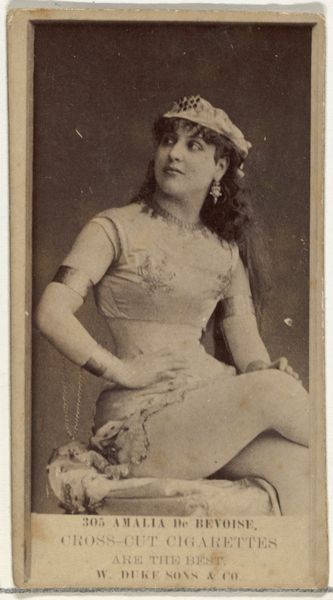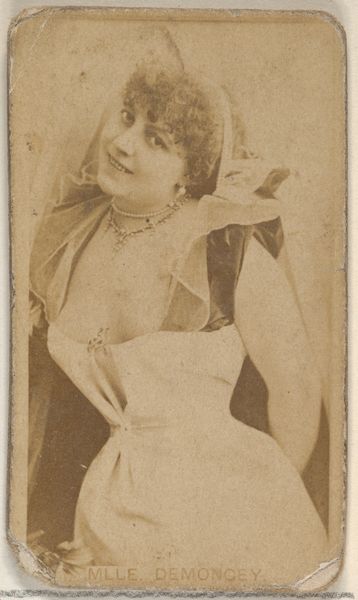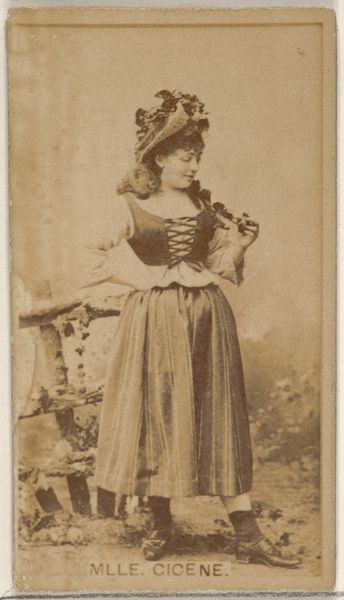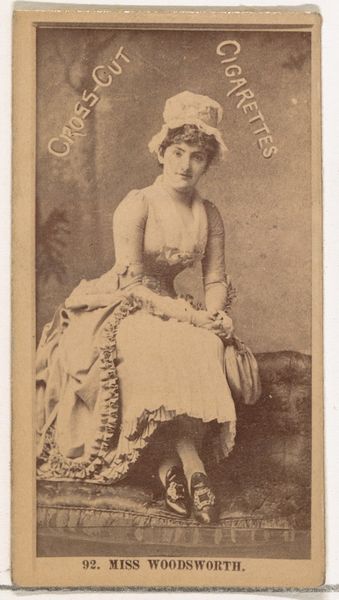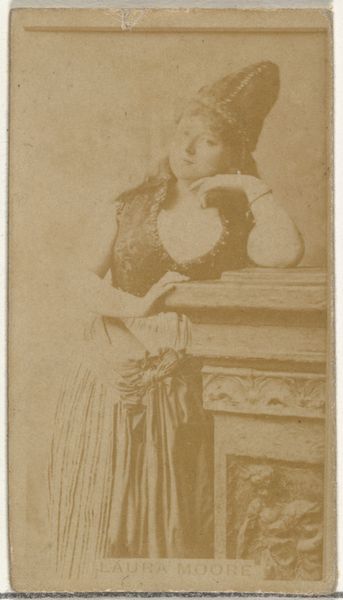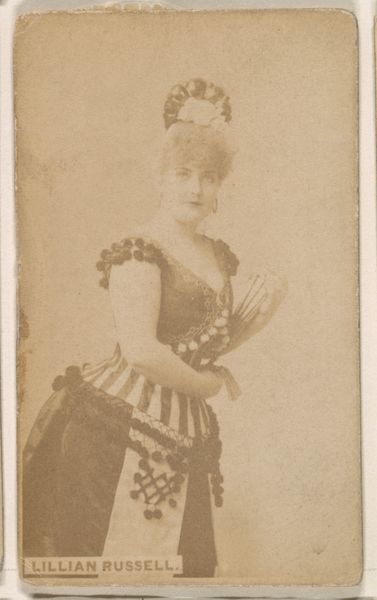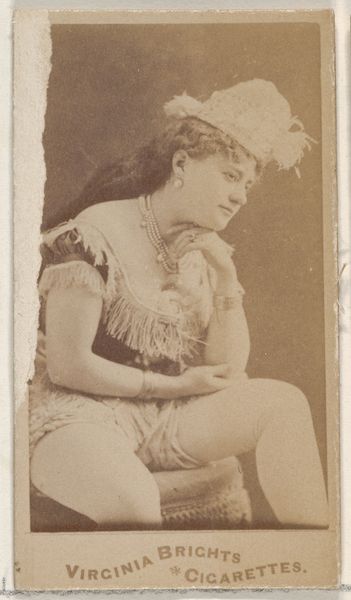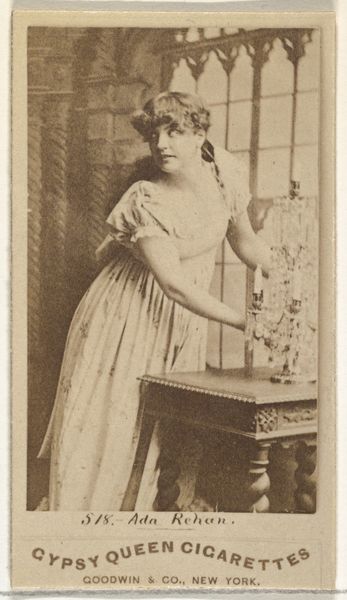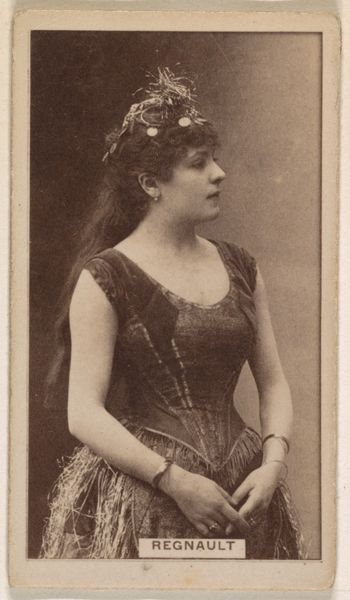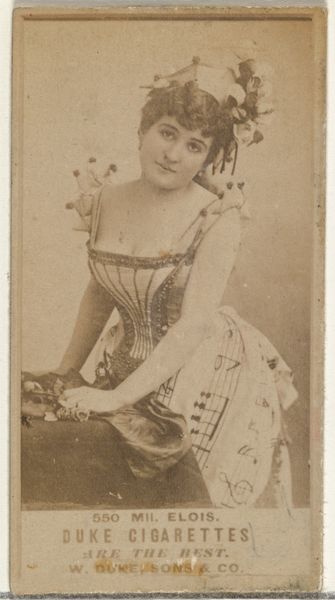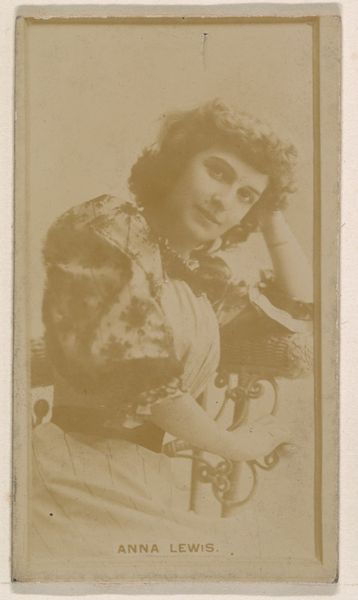
Laura Moore, from the Actors and Actresses series (N45, Type 8) for Virginia Brights Cigarettes 1885 - 1891
0:00
0:00
drawing, print, photography
#
portrait
#
drawing
# print
#
figuration
#
photography
Dimensions: Sheet: 2 5/8 x 1 1/2 in. (6.6 x 3.8 cm)
Copyright: Public Domain
Editor: So, this is a print from between 1885 and 1891 by Allen & Ginter, titled "Laura Moore, from the Actors and Actresses series (N45, Type 8) for Virginia Brights Cigarettes." What really grabs me is its connection to commercial culture; it's almost like a very early form of celebrity endorsement. What strikes you most about it? Curator: What I find particularly fascinating is the way this image reflects the growing intersection of commerce, celebrity, and performance in the late 19th century. These cigarette cards weren't just advertising; they were actively constructing and circulating images of ideal womanhood, weren't they? Editor: Absolutely! And Laura Moore herself… was she a significant figure in theater at the time? Curator: Yes, Moore was part of a burgeoning popular culture. The mass production of these images meant that women, previously confined to the domestic sphere in visual representation, were now entering the public consciousness via consumer culture. The card is, essentially, a collectible token that participated in the making of a star. Consider the power that has in shaping social values and aspirations, through the lens of art. How are notions of celebrity, performance, and identity tied together here? Editor: That’s a great question! Thinking about it as part of shaping “social values and aspirations” really elevates it beyond a simple advertisement. It also feels like the predecessor of influencer culture somehow? Curator: Precisely! The photograph, mass-produced and widely disseminated, created a powerful feedback loop: celebrity boosted sales, and sales further amplified celebrity, shaping a collective image. It speaks volumes about the cultural value placed on actresses at the time, and how images themselves play a critical role in this transformation. Editor: I never thought I would see this commercial object as an influential artifact! It seems that the more you explore a topic, the more exciting insights arise. Curator: Indeed, looking at art in context allows us to unpack larger historical processes and cultural narratives that shape our understanding.
Comments
No comments
Be the first to comment and join the conversation on the ultimate creative platform.

